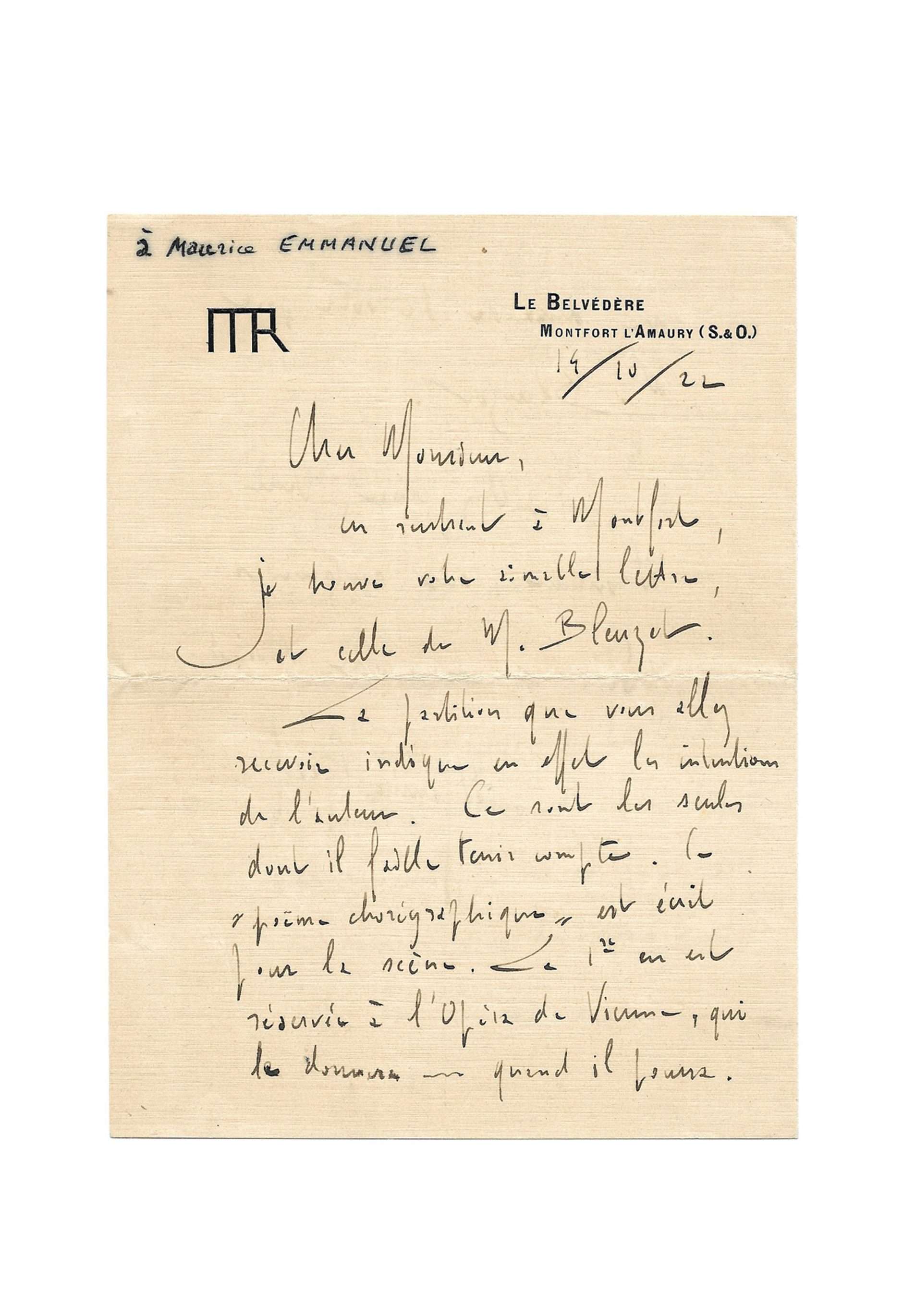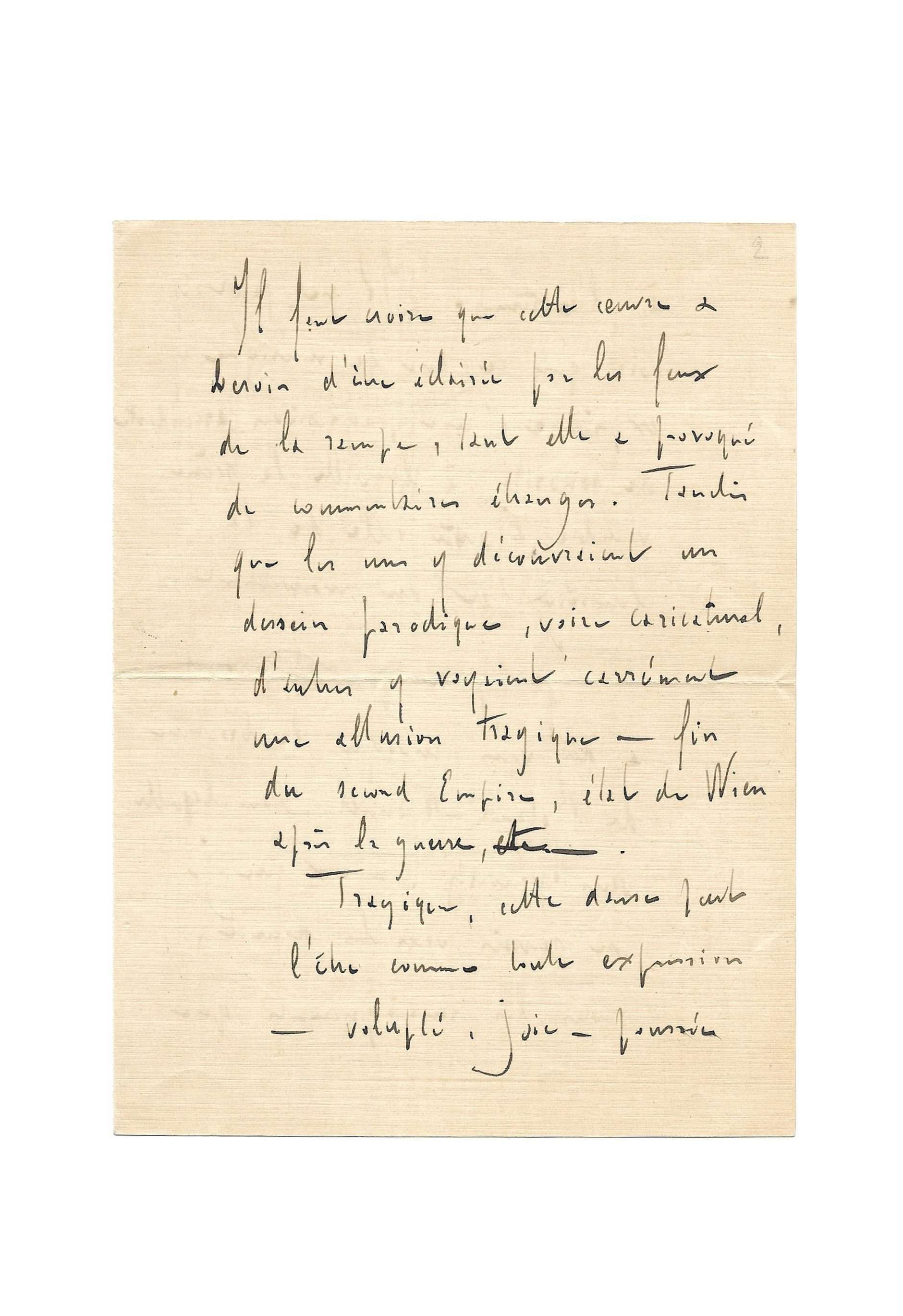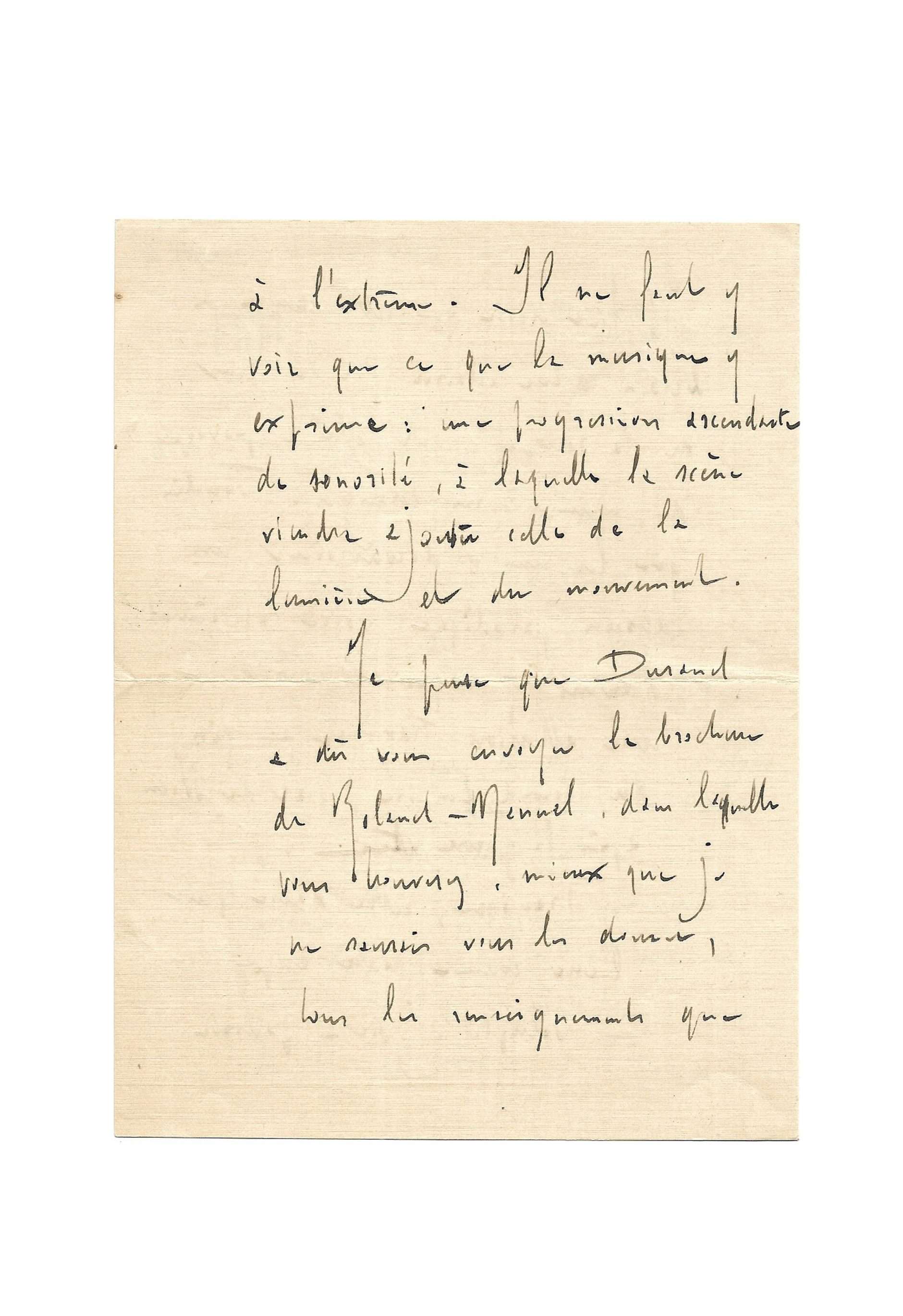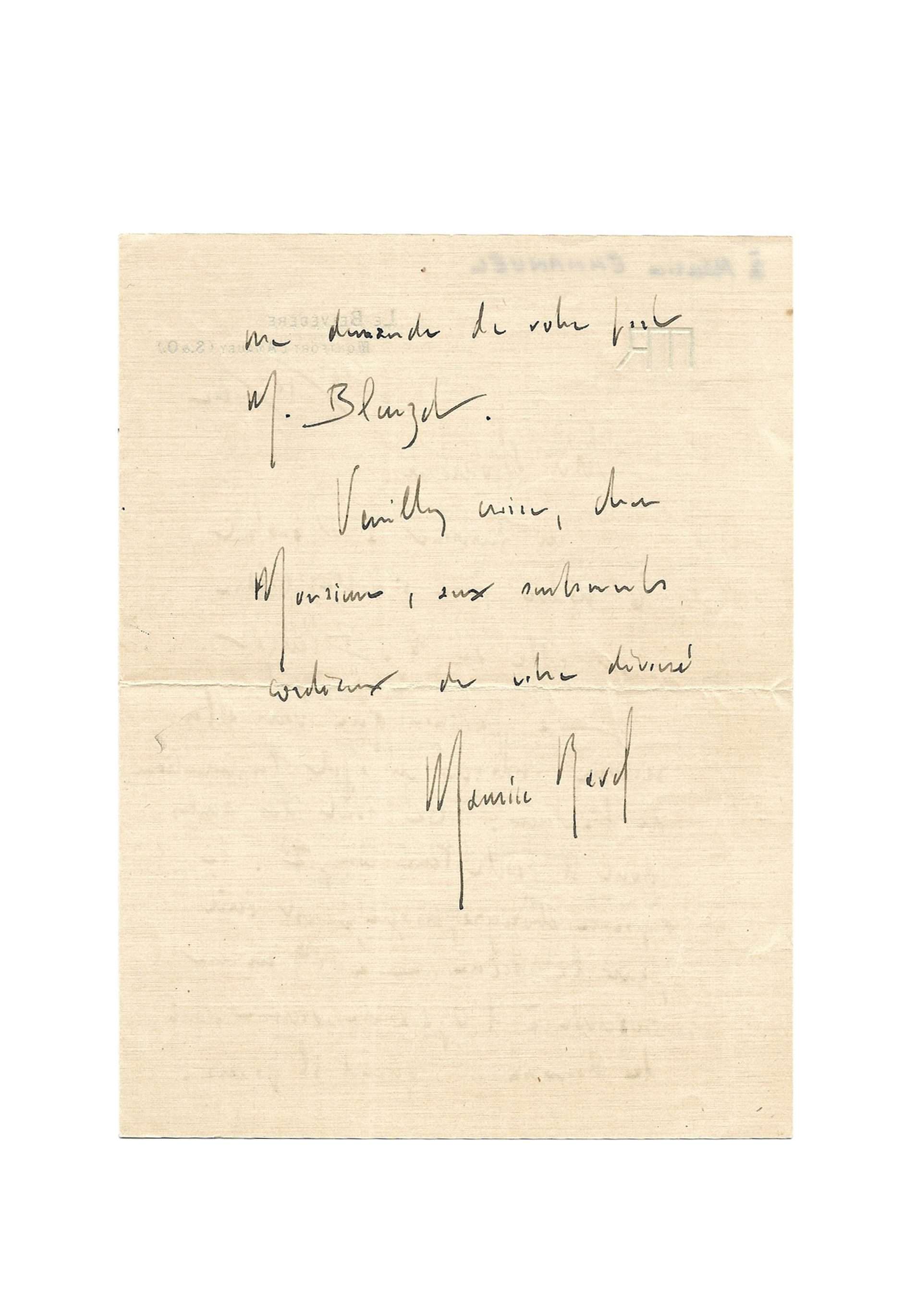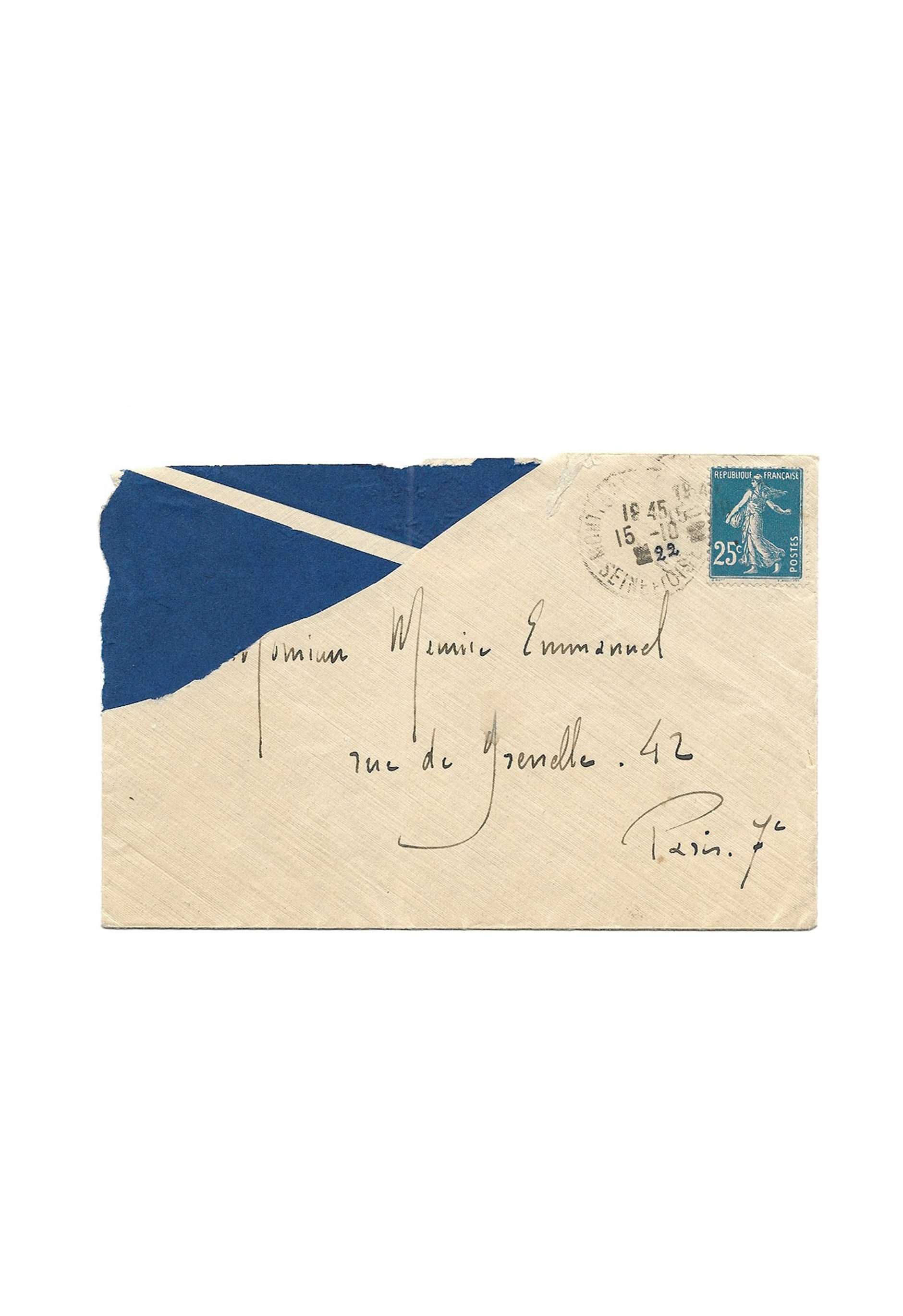RAVEL, Maurice (1875-1937)
Autograph letter signed « Maurice Ravel » to Maurice Emmanuel
[Montfort-l’Amaury], « 14/10/[19]22 », 4 p. in-8°
« An upward progression of sound »
Fact sheet
RAVEL, Maurice (1875-1937)
Autograph letter signed « Maurice Ravel » to Maurice Emmanuel
[Le Belvédère, Montfort-l’Amaury (S. & O.)], « 14/10/[19]22 », 4 p. in-8°
With stamped autograph envelope (cut out in upper left margin)
Annotation “À Maurice Emmanuel” from another hand
Famous and important letter in which Ravel reacts to critics on La Valse, his first major work of the post-war period, while explaining its artistic significance
« Cher Monsieur,
En rentrant à Montfort(1), je trouve votre aimable lettre, et celle de M. Bleuzet(2). La partition que vous allez recevoir indique en effet les intentions de l’auteur. Ce sont les seules dont il faille tenir compte. Ce « poème chorégraphique » est écrit pour la scène. La 1ère en est réservée à l’opéra de Vienne, qui le donnera… quand il pourra.
Il faut croire que cette œuvre a besoin d’être éclairée par les feux de la rampe,tant elle a provoqué de commentaires étranges. Tandis que les uns y découvraient un dessein parodique, voire caricatural, d’autres y voyaient carrément une allusion tragique – fin du second Empire, étant de Wien après la guerre, etc.
Tragique, cette danse peut l’être comme toute expression – volupté, joie – poussée à l’extrême. Il ne faut y voir que ce que la musique y exprime : une progression ascendante de sonorité(3), à laquelle la scène viendra ajouter celle de la lumière et du mouvement.
Je pense que Durand a dû vous envoyer la brochure de Roland-Manuel, dans laquelle vous trouverez, mieux que je saurais vous les donner, tous les renseignements que me demande de votre part M. Bleuzet.
Veuillez croire, cher Monsieur, aux sentiments cordiaux de votre dévoué
Maurice Ravel »
[1] Ravel had just returned from Holland, where he had taken part in the festival of contemporary French music held at the Concertgebouw in Amsterdam from 27 September to 1 October.
[2] Louis Bleuzet (1871-1941), oboist, secretary of the Société des concerts du Conservatoire.
[3] In 1928, Maurice Ravel made an even more marked “upward progression of sonority” with the Bolero.
La Valse, a choreographic poem for orchestra, was composed by Ravel between 1919 and 1920 and publicly premiered on 12 December 1920 by the Concerts Lamoureux.
Its genesis, however, dates back to the year 1906. In agreement with Serge de Diaghilev, Ravel in face to compose for the ballet an Apotheosis of the waltz in homage to Johann Strauss. The First World War, however, forced him to postpone his projects and changed the composer’s initial ambitions. The romantic and sumptuous evocation of the Viennese court of the nineteenth century, so well represented by the Waltzes of Johann Strauss II, is replaced by the image of a decadent world.
Ravel composed La Valse fiercely, as an outlet, and completed it in less than five months, knowingly disfiguring the Viennese waltz while depicting a “fantastic and fatal whirlwind”. Refused by the Ballets Russes in 1920 during a first audition that marked the definitive break between Ravel and Diaghilev, and despite mixed reviews, the work was nevertheless a huge success at the concert and was finally adapted for the theater, in 1929, for the ballets of Ida Rubinstein.
La Valse bears the reference M.72 in the catalogue of the composer’s works drawn up by the musicologist Marcel Marnat.
Bibliography:
Maurice Ravel, éd. Arbie Orenstein, Flammarion, p. 205-206, n°206
Maurice Ravel, L’intégrale, éd. Manuel Cornejo, Le Passeur, p. 848, n°1502
Exhibition:
Maurice Ravel, Bibliothèque Nationale, 1975, n°323
Provenance:
Maurice Emmanuel
Then Frank Emmanuel, by descent
Then collection particulière
